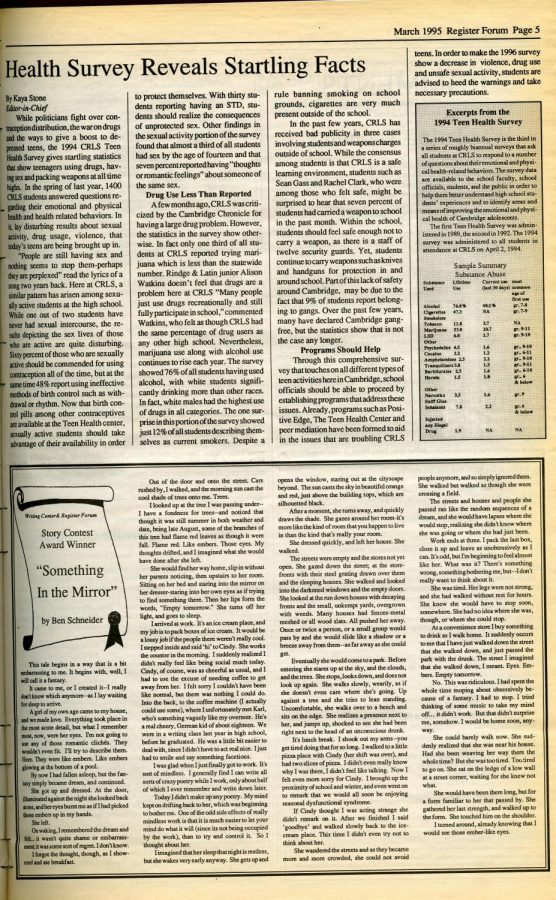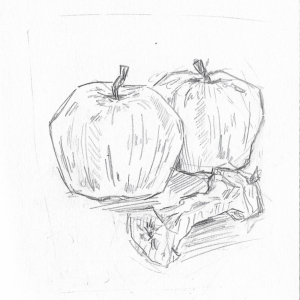Blast From The Past: March 1995
Teen Health Survey Results and Award-Winning Short Story
March 26, 2020
This page, taken from the March 1995 edition of the Register Forum, provides a glimpse at CRLS 25 years ago. The article at the top of the page discusses the results of the third-ever Teen Health Survey, which was administered on April 2nd, 1994. The now-biannual Teen Health Survey was first distributed in 1989. Its objective has always been to describe the experiences of CRLS students regarding topics such as sexual health, mental health, and drug and alcohol use. However, the specific questions asked by the survey have changed over the years, ensuring the results are relevant and useful. For example, 2016 was the first year that students were asked questions about e-cigarette use.
The survey has always been distributed in early or mid-April. This date falls before both April break and prom—times when student behavior may not be representative of their general habits. Distributing the survey at this time ensures that current* substance use and sexual activity are not recorded as inaccurately high. The survey results are made publically available (now online) in the hopes that they will guide administrators and community members in their efforts to support students.
The results discussed in the 1995 article provide interesting comparisons to the results of the most recent Teen Health Survey, which was administered in 2018. For one, alcohol use has decreased quite a bit; in 1994, 40.1% of students reported current* alcohol use and 76% reported lifetime** alcohol use, as compared to 28% and 50% in 2018. Marijuana use, on the other hand, has increased: In 1994, 20.7% of students reported current marijuana use and 30% reported lifetime marijuana use, as compared to 24% and 39% in 2018.
Sexual activity has decreased dramatically. In 1994, 50% of all students reported ever having had sex, as compared to 28% of students in 2018. Additionally, the use of protection during sexual activity has improved. In 1994, 60% of sexually active students reported using protection all of the time. However, 48% of sexually active students used inconsistent methods of contraception (withdrawal, etc.). Comparatively, in 2018, 63% of sexually active students reported using a condom the last time they had sex.
Additionally, whereas the 1994 survey reported that 7% of students had brought a weapon into school in the past month, the 2018 survey reported that 2.5% of students had done so in the past twelve months. This trend is mirrored within gang membership, as well; in 1994, 9% of students reported belonging to a gang, whereas, in 2018, only 1% did.
Along with the article about the Teen Health Survey, this page contains an award-winning short story about a boy who works at an ice cream shop. Paired with the data-driven article above it, this story, which explores the thoughts and actions of a high school student, provides a look at the people behind the numbers. These two pieces exemplify some of the many ways that life as a CRLS student (or as a high schooler in general) has changed. More striking, however, is how this experience seems to have remained very much the same.
* Any use within the 30 days preceding the administration of the survey
**Any use during one’s lifetime










